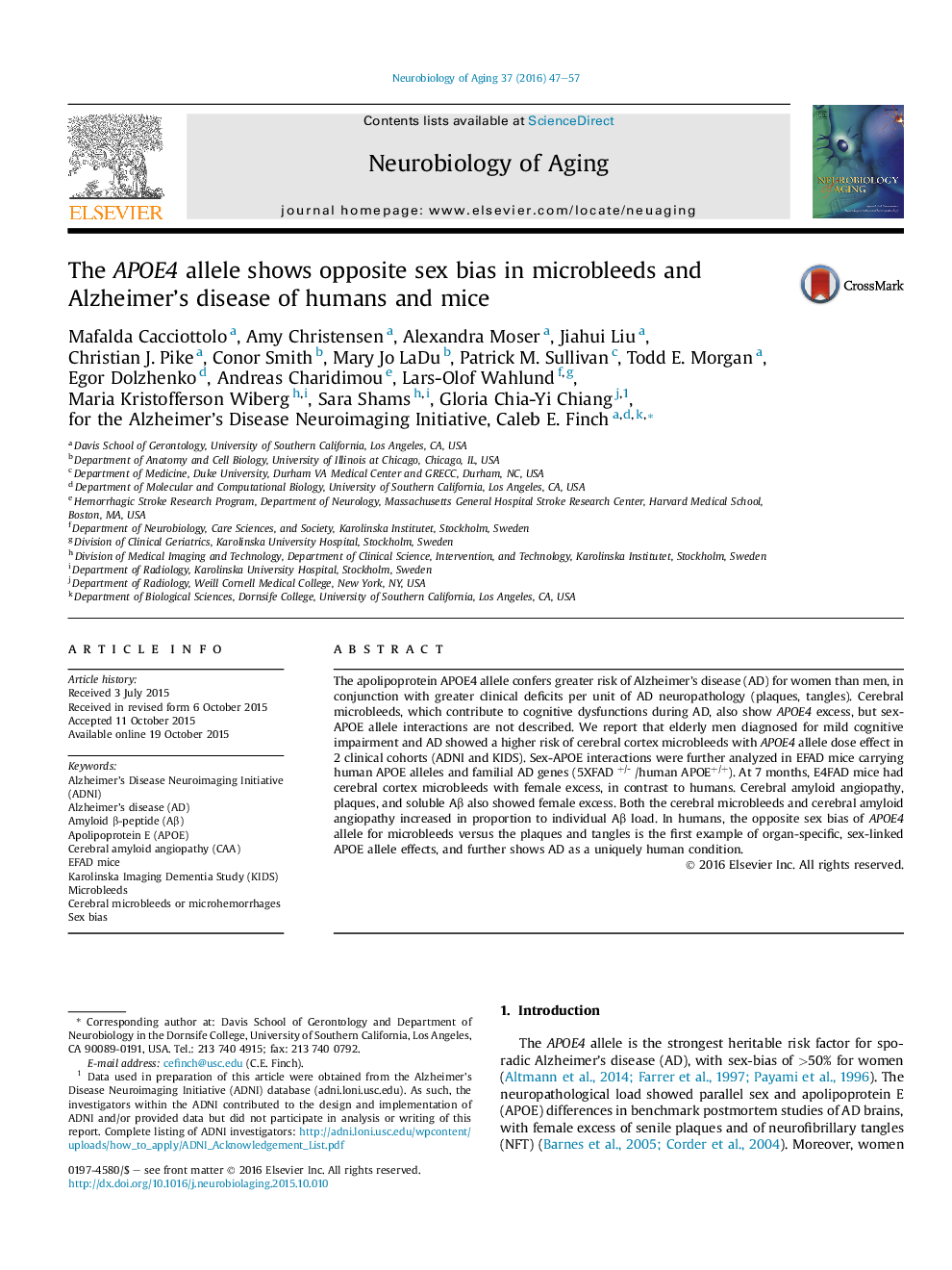| Article ID | Journal | Published Year | Pages | File Type |
|---|---|---|---|---|
| 6803685 | Neurobiology of Aging | 2016 | 11 Pages |
Abstract
The apolipoprotein APOE4 allele confers greater risk of Alzheimer's disease (AD) for women than men, in conjunction with greater clinical deficits per unit of AD neuropathology (plaques, tangles). Cerebral microbleeds, which contribute to cognitive dysfunctions during AD, also show APOE4 excess, but sex-APOE allele interactions are not described. We report that elderly men diagnosed for mild cognitive impairment and AD showed a higher risk of cerebral cortex microbleeds with APOE4 allele dose effect in 2 clinical cohorts (ADNI and KIDS). Sex-APOE interactions were further analyzed in EFAD mice carrying human APOE alleles and familial AD genes (5XFAD +/- /human APOE+/+). At 7 months, E4FAD mice had cerebral cortex microbleeds with female excess, in contrast to humans. Cerebral amyloid angiopathy, plaques, and soluble Aβ also showed female excess. Both the cerebral microbleeds and cerebral amyloid angiopathy increased in proportion to individual Aβ load. In humans, the opposite sex bias of APOE4 allele for microbleeds versus the plaques and tangles is the first example of organ-specific, sex-linked APOE allele effects, and further shows AD as a uniquely human condition.
Keywords
Related Topics
Life Sciences
Biochemistry, Genetics and Molecular Biology
Ageing
Authors
Mafalda Cacciottolo, Amy Christensen, Alexandra Moser, Jiahui Liu, Christian J. Pike, Conor Smith, Mary Jo LaDu, Patrick M. Sullivan, Todd E. Morgan, Egor Dolzhenko, Andreas Charidimou, Lars-Olof Wahlund, Maria Kristofferson Wiberg, Sara Shams,
